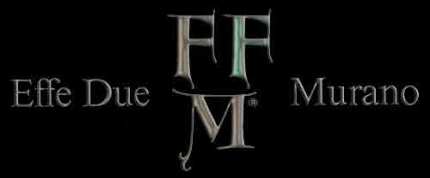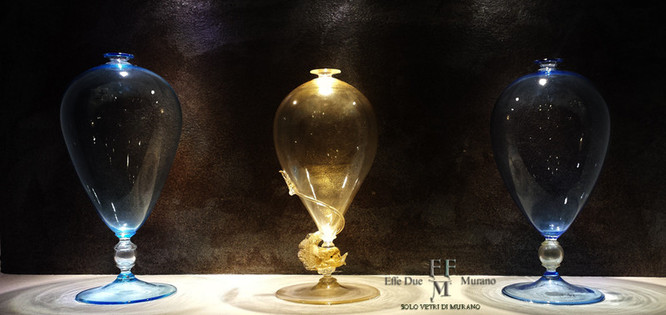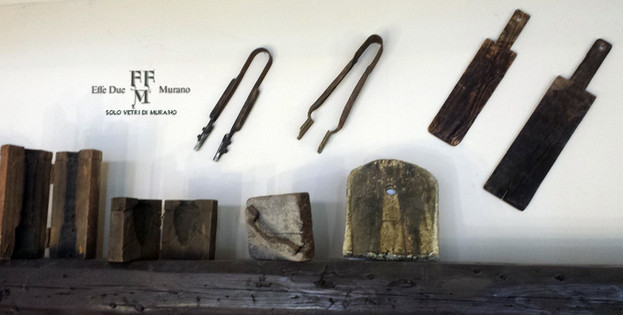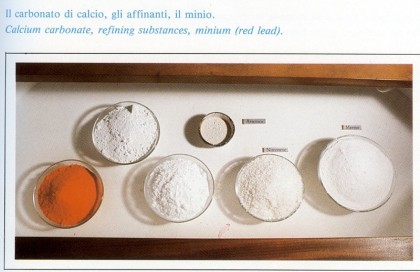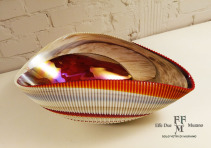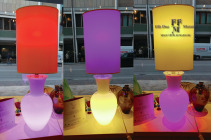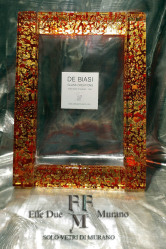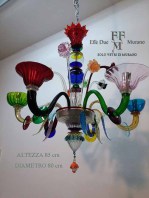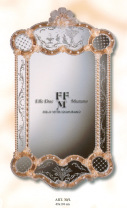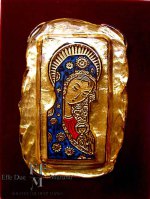HOW TO FORM THE GLASS,come si forma il vetro
CENNI DI STORIA DEL VETRO DI MURANO
A cavallo tra il duecento e il trecento, le importanti casate nobiliari europee commissionano alle vetrerie veneziane oggetti domestici in vetro come bicchieri ed ampolle. L’esercizio di questa
arte in questo periodo è concentrato a Murano lungo il Rio dei Vetrai, dove ancora oggi si trovano le fornaci più antiche.
Dal 1450, grazie anche al contributo di Angelo Barovier, vetraio di una delle famiglie più antiche di Murano, a Venezia avviene una vera e propria rivoluzione tecnologica che permette alla città di
intraprendere uno sviluppo eccezionale nel corso dei due secoli successivi.
Il vetro creato da Barovier si contraddistingue per l’elevata purezza, per le somiglianze al cristallo di roccia, talmente incolore e terso da essere denominato “cristallo”. Altre invenzioni
attribuibili a Barovier sono il *”lattimo”, un vetro bianco opaco simile alle porcellane cinesi ed il *”calcedonio”, una pasta vitrea molto simile ad una varietà del calcedonio naturale. E’ però nel
XVI secolo che la storia del vetro di Murano conosce il suo massimo splendore.
A BRIEF HISTORY OF MURANO GLASS
Straddling the two
hundred and three hundred , the important noble families to the European commission Venetian glassware household items such as glasses and glass ampoules . The exercise of this art in this period is
concentrated along the Murano Glass Merchants of Rio , where even today you will find the oldest kilns .
Since
1450 , thanks to the contribution of Angelo Barovier , glazier of one of the oldest families of Murano, Venice takes a real technological revolution that allows the city to undertake a dramatic
development during the next two centuries .
The glass created by
Barovier is characterized by high purity, for the similarities in rock crystal , colorless and clear so as to be called "crystal" .
Other inventions attributed to Barovier * are the " milky " , a white opaque glass similar to Chinese porcelain and * " chalcedony " , a glass paste very similar to a variety of natural chalcedony
. And ' in the sixteenth century , however, that the history of Murano glass enjoyed
its greatest splendor.
Per ottenere il liquido, il fuso, che solidificando avrà le caratteristiche
del vetro, si parte da materie prime che, per il 70 % in peso circa,
sono costituite da sabbia (silice). Si può dire che il vetro è fatto
sostanzialmente di silice, chiamata perciò "vetrificante", le altre
materie prime essendo aggiunte per ottenere un liquido a temperature
non troppo elevate: 1400°C circa per l'attuale vetro muranese, mentre
la silice, da sola, si trasforma in liquido a temperature superiori ai
1700°C. Le sostanze che consentono di ottenere un liquido a
relativamente basse temperature vengono chiamate "fondenti".
Il fondente tipico è la soda. L'ossido di sodio presente nel vetro
modifica notevolmente le caratteristiche del vetro ottenuto.
In particolare la lavorabilità e la resistenza chimica della superficie.
Tanto maggiore è la quantità di sodio presente nel vetro e tanto più di
vetro solidifica "lentamente" (si dice che il vetro è "lungo"). Per la
lenta lavorazione manuale, sarà necessario che il vetro sia
sufficientemente lungo, e contenga quindi abbastanza sodio.
La quantità di sodio non deve però essere eccessiva altrimenti il vetro
opacizza in superficie per azione dell'umidità atmosferica. Per limitare
la tendenza all'opacizzazione viene impiegato il calcare o carbonato di
calcio. Anche il calcio abbassa la temperatura alla quale si ottiene il
liquido fuso ed è quindi un fondente, ma poiché inoltre limita la
tendenza alla opacizzazione viene chiamato "stabilizzante", in quanto
rende stabile la superficie del vetro nei confronti dell'umidità
atmosferica. Per avere un vetro sodico che conservi nel tempo le sue
caratteristiche di trasparenza è necessaria quindi una certa quantità di calcio.
Altre materie prime che si aggiungono alla miscela vetrificabile
costituita da silice, soda e calcare, sono il nitrato e l'arsenico che
hanno azione "affinante", cioè facilitano la fuoriuscita delle bolle dal
fuso e migliorano l'omogeneità. Con queste materie prime si ottiene il
vetro trasparente incolore, chiamato, fin dal 1450 circa, "Cristallo
muranese". Se alle materie prime indicate vengono aggiunte piccole
quantità di sostanze coloranti od opacizzanti, si ottengono i vetri
colorati o i vetri opali.
TECHNOLOGY AND TRADITION
IN MURANO GLASSMAKING
Tullio Toninato
On the 20th oj December, 982, Dominicus "fiolarius", that is, maker
of phials or glass ampoules, signed a document donating the Church
oj San Giorgio on the island oj the same name, in Venice, to
Giovanni Mauroceno.
This is the oldest document attesting to glassmaking activities in the
Venetian lagoon, activities that are thought to have their origin well
back in history and certainly bejore 982, and, that were to gain so
much jame and prosperity in successive centuries.
On the occasion oj the thousand year anniversary oj the donation, an
exhibition was set up in rooms oj the Ducal Palace and the Correr
Museum. It celebrated "A Thousand Years oj Glassmaking in
Venice". Included in this exhibition there was a technical section,
arranged by the Stazione Sperimentale del Vetro in Murano, with the
aim oj illustrating the most ancient Muranese glass production and
present day working techniques.
The text which jollows has been, in fact, taken jrom the exhibition
catalogue by Albrizzi published in Venice, as indeed the photographs
enclosed which are oj material displayed in the exibition.
The specific jeature of glass, the one which distinguishes it jrom other
materials, metals jor example, is the way in which it solidifies, that is,
how it passes jrom the liquid state at high temperatures (l400°C jor
present-day Murano glass) to the rigid-solid state. Solidification in
glass takes piace slowly as the temperature decreases. It passes jrom
the fluidity of the melted substance with ever-increasing viscosity to
the rigidity oj the solid at about 500°C. It is in this interval, called in
jact the working time, when the glass is fairly, "pastoso" (Le. with a
paste-Iike viscosity), and bejore it hardens completely, that the glass
master can shape the object which will have all the rigidity oj a solid
body but recall the liquid by its transparence.
In order to obtain the liquid, the molten substance which, on
solidifying, will have the characteristics oj glass, one starts from raw
materials, of which about 70% by weight is made up oj sand (silica).
It can be said that glass is made essentially out oj silica which
therejore is called the "vetrificante" (glassmaking agent). The other
raw materials are added to keep the temperature oj jusion down:
1400°C jor present-day Murano glass, while silica alone has a melting
temperature oj 1700°C. The substances which allow this lowering oj
temperature are thus called "fondenti" (flux or melting agents).
Typical is soda ash. The sodium oxide present in the glass modifies
the characteristics oj the glass obtained considerably, particularly in
its workability and in the chemical resistance oj its surjaces. The more
sodium oxide there is in the glass, the slower it solidifies. (It is said
that the glass is "lungo", long). Slow hand working requires a glass
whicn is "long" enough and which must therejore contain enough
sodium oxide. The amount oj sodium oxide must not be excessive,
however, otherwise the glass becomes opaque on the surjace in
reaction to the atmospheric humidity. To contain this tendency,
limestone or calcium carbonate is used. Calcium, too, lowers the
melting point and is therejore a "flux", but since il also limits the
tendency towards opacity, il is called a "stabiliser", in that it makes
the surjace of the glass stable in relation to atmospheric humidity, To
have a sodium glass which retains its characteristics of trasparency
over time, a certain quantity of calcium is necessary.
Other raw materials which are added to the batch of silica, soda ash
and limestone are nitrate and arsenic, which have a "refining" action;
that is they facilitate the elimination of bubbles from the liquid and
improve its homogeneity. With these raw materials the transparent
colourless glass known as "Murano crystal" was obtained from about
14500n.
With the addition of small quantites of colouring or opacifying
substances to the raw materials mentioned, coloured or opal glass is
obtained.
The raw materials used today have to be very pure. The sand, in
particular, must not have more than 0.01 % of iron in it, otherwise
the glass will emerge blue-green. No common beach sand, then, for
glassmaking, but pure quarry sand, even though today the colouring
produced by iron can be avoided by using small quantites of
decolourisers (selenium, cobalt, neodymium, manganese) which,
however, in reducing colouration also reduce transparency.
The purity of the soda ash used today is assured by the industriai
process with which it is obtained. This is the "Solvay " process,
named after its inventor. It substituted the Leblanc process about the
middle of the last century when the latter had been in use for 50
years.
The other materials used today are also obtained either through
industriai processes or directly from the quarry at a level of purity
which is also compatible with costs. The homogeneity and the
transparency of fine blown Murano glass today are definitively
guaranteed by the purity of the raw materials and the glass-melting
methods, that is the possibility of reaching furnace temperatures of
over 1400°C, thanks to rich fuels sucn as methane.
